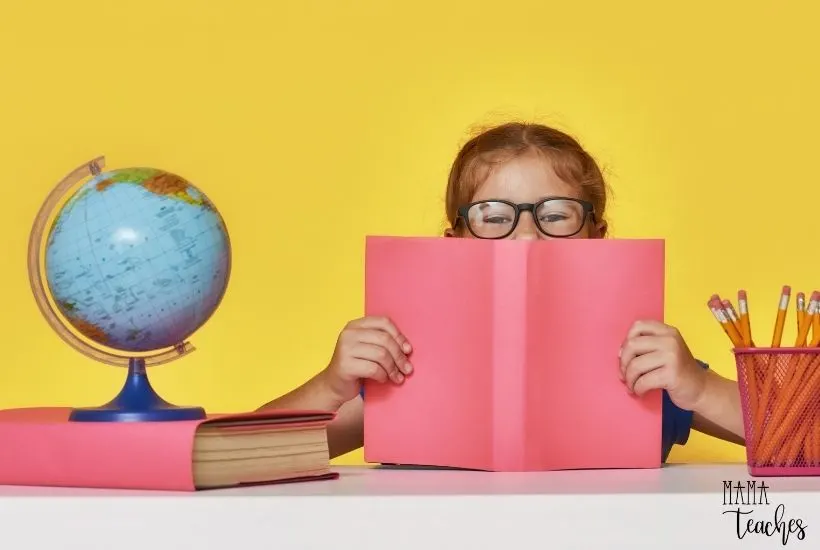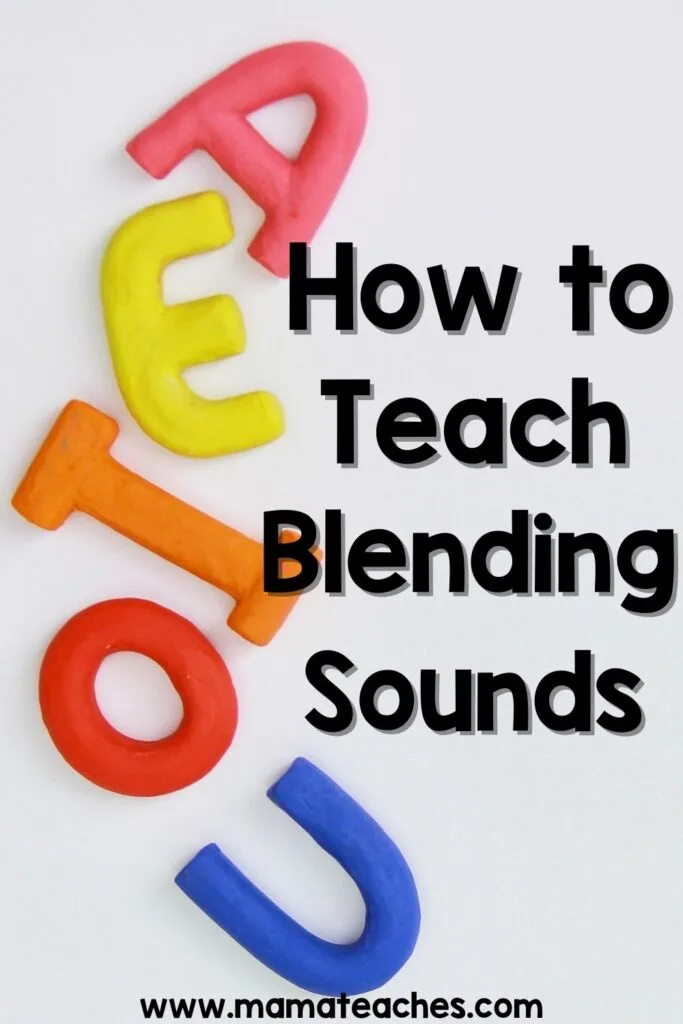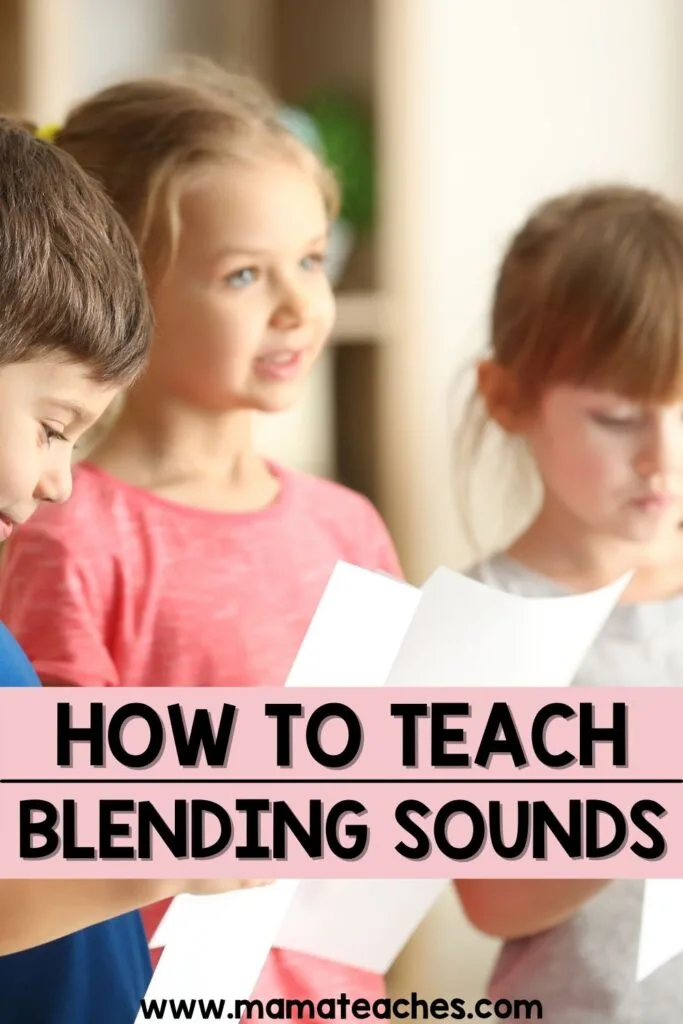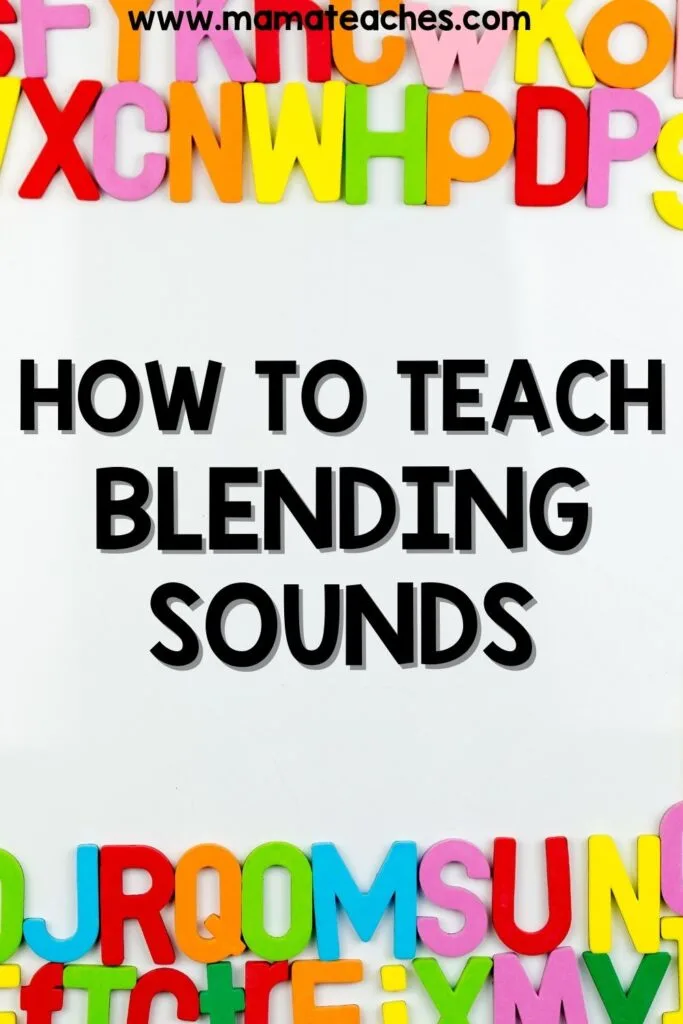You’ve taught the letter sounds, but your student’s letter sounds don’t sound like words.
How do you teach blending sounds to students?
We’ve got the tips, techniques, and activities to make it all come together!

This article contains affiliate links to things that you might like.
Blending Sounds Into Words
It is a huge step when a child can look at the letter b and say the sound for it.
Unfortunately, words are not made up of distinctly separate sounds.
The sounds need to blend together. For instance, the word “cup” is not pronounced “Kuh [pause] uh [pause] puh.” Instead, it is a smooth and blended “cup.”
So how do you take a child from saying individual letter sounds to blending the sounds into syllables? (Hint: It’s more fun than you think.)
Teaching Blending Sounds
Some letter sounds are continuous while others are not.
For example, you can say the word “run” very slowly, so each sound continues into the next: “rrrrrrrrruuuuuunnnnnnn.” You cannot do that with the word “pop” because p is not a continuous sound.
When you begin teaching blending, use words made from letters with continuous sounds.
These include:
- The vowels: a, e, i, o, u
- The continuous consonants: F, h, l, m, n, r, s, v, y, z
- Examples of continuous words: run, ham, van, sun, fizz, yam, moss, rim, loss
When you move to words that start with non-continuous letters (b, c, d, g, j, k, p, q, t, w, and x), you will need to pause for 1 second before continuing with the word.
For example, “cat” would sound like “/k/ [pause] aaaaaaaat.”
This technique prevents children from adding a vowel sound to these letters “cuhhhhhhhhhaaaaaaatuhhhhh.”
This will distort the sound and make the word harder to recognize.

Blending Sounds Games and Activities
Using games and activities to teach blending sounds is a great multisensory approach to reading.
It makes the task fun.
In the early years, learning is play and play is learning.
Say It in Slo-Mo
Practice saying words at regular speed and then in slow motion.
Use only the words that are formed from continuous sounds (like “mom” and “run”).
First clap your hands and pull them apart as you say the word at normal speed.
Have the child repeat the word and motion back.
Then say the word slowly, holding each sound for 1-2 seconds, as you do a slow-motion clap.
The child repeats.
Sing It
Singing is made from blending sounds together, and all children can sing.
Say and sing words in front of a mirror.
(You can even write the word on the mirror with a dry-erase marker.)
Magnet Switcheroo
Many words have the same ending sound but a different beginning letter.
These words are ideal for practicing blending because the student confidently knows part of the word.
You can use letter magnets to make this a kinesthetic activity.
Place the word “at” on the board for the child to sound out.
Practice blending that sound.
Now add various letters to the beginning of “at” to form new words.
This is a great activity to practice the non-continuous letter sounds.
Here are some combinations to get you started:
- Words built off “at”: hat, bat, rat, sat, cat, mat, pat
- Words built off “in”: pin, bin, din, fin, tin, win
- Words build off “an”: man, can, ban, tan, ran, van
Call and Response
This game is like the slo-mo game but involves the child listening for the word.
Write the word “ran” and say it slowly, blending the sounds: “rrrrrrrrraaaaaaaaannnnn.” Now ask the child to look at the word and try to silently blend the sounds in her head.
You can run your finger under the letters as a guide.
Then ask her to say the word at normal speed.
Fuzzy Wuzzy
Many children benefit from combining senses as they learn.
Set a fuzzy blanket on the tabletop (I love the ones that feel like stuffed animals).
Then place letter tiles (or index cards) on the blanket to form a word (for example, “man”).
Say the word slowly as you run your finger under the letters.
Then separate the word tiles so there are around 10 inches between the letters.
Say the word again, running your finger along the fuzzy blanket as you blend the sounds, “mmmmmmmaaaaaaannnnnn.” The student then runs his finger under the separated word and blends the sounds.
Then have him push the letter tiles back together and say the blended word.

Drive It or Walk It
This game involves your student’s favorite tiny toy.
Toy cars work well, but feel free to use a train, Lego figure, or tiny plastic animal.
Make a “zzzzzzz” sound as the toy slides all over the page.
That’s the warmup!
Then have the car drive over a word printed in large type as you blend the sounds.
Have the child repeat.
If you get to a noncontinuous sound, have the car stop for a second and then move forward.
For example, the word “pat” would be: “P [pause and stop] aaaaaaaa- T [pause and stop]” Have the car drive over the word until the child can say it smoothly and at normal speed.
What to Do If Students Have Difficulty Blending Sounds Into Words
If a student is having trouble blending sounds, first make sure she has a firm grasp on letter sounds.
She needs to have automatic recall of the letter sound when she sees the letter.
It may be that she is pausing to think as she reads a word.
So take a step back and review letter sounds for a while.
You can also work on phonemic awareness.
This ability involves hearing the separate sounds in a word, pulling out the sounds and putting them back together.
Check out this article on How to Teach Letter Sounds to Struggling Students.

How to Teach Syllable Blending
By using a fun, multisensory approach to teaching blending, this concept will soon click with your students.
This important skill will help your students as they travel the road to reading!
